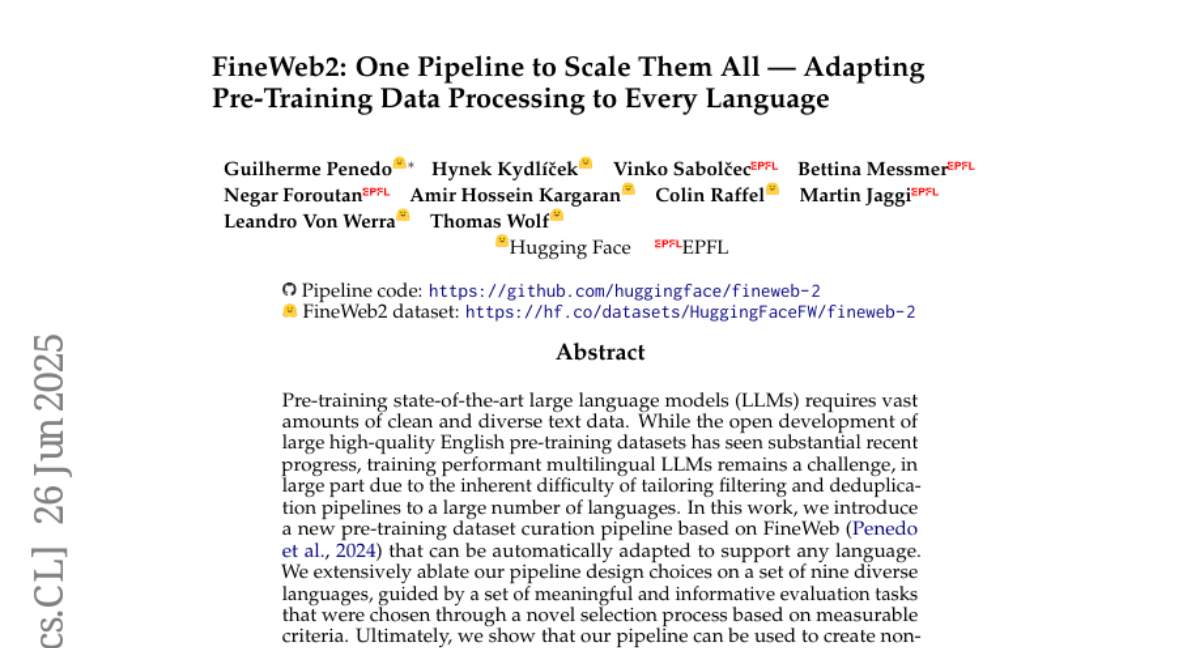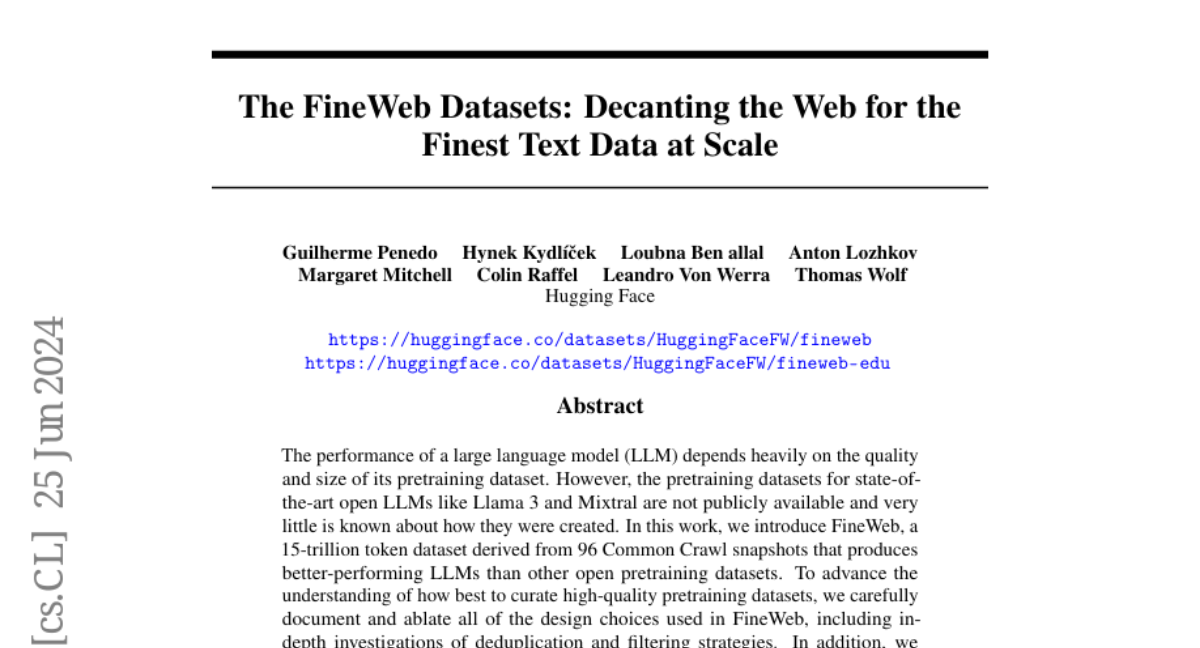TokSuite: Measuring the Impact of Tokenizer Choice on Language Model Behavior
Paper
•
2512.20757
•
Published
•
14
We release large pre-training datasets to accelerate open LLM development. Part of the Hugging Face Science team (hf.co/science)

FineWeb2: One Pipeline to Scale Them All -- Adapting Pre-Training Data Processing to Every Language

The FineWeb Datasets: Decanting the Web for the Finest Text Data at Scale